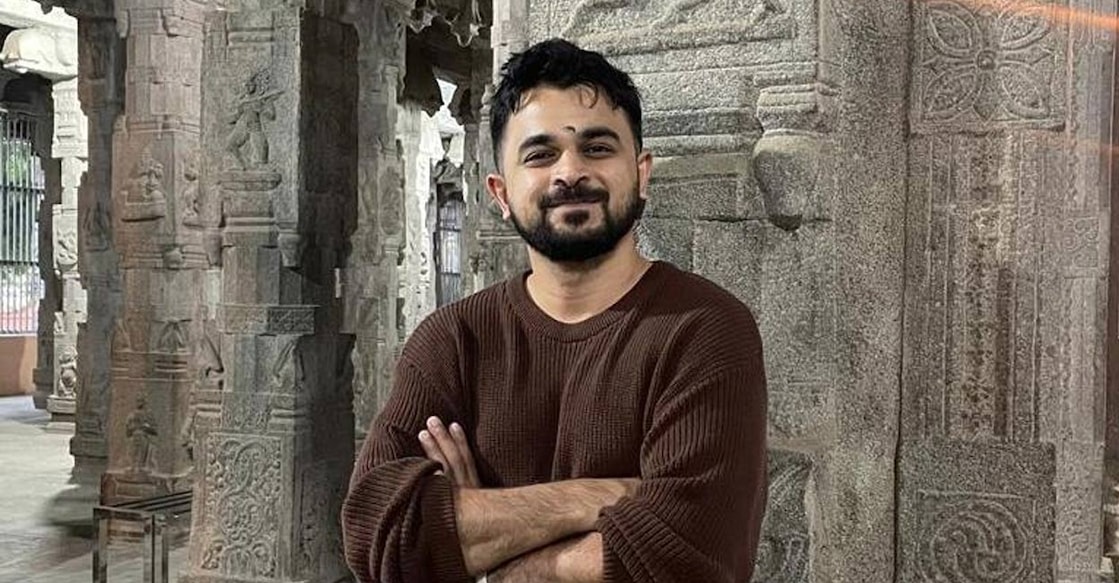Bharat Forecast System: Palakkad scientist part of team behind India's leap in weather prediction

Mail This Article
As India faces increasingly erratic weather patterns—ranging from flash floods to prolonged droughts—the country recently marked a significant achievement in meteorology by launching the Bharat Forecast System (BFS), an indigenously developed, high-resolution weather forecasting model. Developed by scientists at the Indian Institute of Tropical Meteorology (IITM), Pune, the system enhances India’s prediction capabilities, improving resolution from 12 km to 6 km. Among the scientists behind this innovation is Palakkad native A G Prajeesh.
Prajeesh, who joined IITM as a scientist in 2011, became part of the core team led by Parthasarathi Mukhopadhyay. He played a key role in coding and integrating new algorithms into the model. “The 2018 Kerala floods and recurring flash floods in Himachal were major triggers for us to start working on an advanced indigenous system,” he says.
Although not part of the initial team, Prajeesh eventually joined and contributed significantly to the technical backbone of the model. Over the years, he has worked on several forecasting systems, including short-range (up to five days) and seasonal models, collaborating across teams at IITM.
BFS marks a strategic upgrade from the US-based Global Forecast System (GFS), which India has used for years. “BFS isn’t entirely new—it’s an indigenous overhaul of the GFS. But now, it can operate at even finer resolutions, outperforming global systems used by the UK, US, or EU that typically work at 9–14 km resolution,” says Prajeesh.
According to the Ministry of Earth Sciences, this innovation will enable hyper-local forecasts, potentially benefiting every village in India. It aligns with the goals of Atmanirbhar Bharat and Make in India, the ministry added. Union Minister Dr Jitendra Singh noted that BFS would significantly reduce crop losses and improve forecasting of extreme events—with a 30 per cent improvement in extreme rainfall predictions and a 64 per cent enhancement in core zones.
Yet, Prajeesh cautions that tropical weather systems, like those seen across most of India, are inherently unpredictable. “In countries like the US, weather conditions are more stable, so their forecasts are incredibly accurate—even down to whether you need an umbrella. That’s not the case here, where rapid shifts make it harder to predict,” he explains.
Real-time data is critical for precise forecasting. The BFS model incorporates information from radars, satellites, and even aircraft, but Prajeesh notes that India’s observation network still faces challenges. “We lack skilled personnel and systematic infrastructure to collect and process data effectively,” he says.
A key issue, he adds, lies in how forecasts are communicated. “The data must be translated into accessible formats—for farmers, fishermen, policymakers, or even a common person stepping out for errands. Everyone has different needs: some want forecasts for hours, others for a season,” he points out.
Highlighting the growing unpredictability of climate patterns, Prajeesh warns, “There’s no going back. The intensity of events—extreme rains followed by droughts—will only rise. We must upgrade our systems, but also re-evaluate how we live. Technology alone won’t save us.”
Prajeesh completed his BSc in Physics from NSS College, Ottapalam, and his MSc in Oceanography from CUSAT, Kochi, before moving to Pune, where he earned a PhD in Atmospheric Science. He is currently working as a scientist in Saudi Arabia.
Despite the scientific achievement, the BFS launch sparked controversy after Union Minister Jitendra Singh credited the system to an all-women-led team, aligning it with the government’s ‘nari shakti’ narrative. At the launch event on May 26, Singh stated, “Science ministries no longer empower women. They empower us.”
This claim was disputed by project lead Parthasarathi Mukhopadhyay, who told national media, “This was my dream project. Such misinformation is deeply demotivating.”
Of the four women scientists publicly felicitated, only one co-authored the core research paper—Indian Institute of Tropical Meteorology (IITM) High-Resolution Global Forecast Model version 1: an attempt to resolve monsoon prediction deadlock—published in March 2025, with Mukhopadhyay as lead author.
The paper lists the full team of contributors: Parthasarathi Mukhopadhyay, R Phani Murali Krishna, Siddharth Kumar, Prajeesh Gopinathan, Peter Bechtold, Nils Wedi, Kumar Roy, Malay Ganai, B Revanth Reddy, Snehlata Tirkey, Tanmoy Goswami, Radhika Kanase, Sahadat Sarkar, and Medha Deshpande.
Speaking to Onmanorama, Prajeesh also expressed his disappointment. “The ministry is using our work for political gains, spreading false claims about its contributors. Despite assurances from the Ministry's secretary that this wouldn’t continue, the narrative is still being pushed on official channels,” he said. “Our academic and research ecosystem already faces many challenges, and now this kind of misrepresentation from the top authorities is adding to the problem.”
BFS model
The BFS model, as detailed in the March 2025 publication, brings major advancements in forecasting accuracy and computational efficiency. It improves orographic rainfall predictions and reduces the ‘Gibbs noise’ in mountainous terrains. A detailed evaluation of the 2022–2023 tropical cyclone season, including Cyclone Biparjoy, revealed the system’s better performance in tracking storm positions across various lead times.
The model also shows significant skill improvements in predicting heavy monsoon rainfall and long-range events, particularly in the Indian subcontinent’s complex climatic zones.


